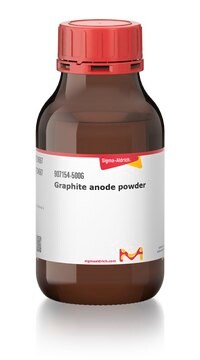496553
Graphite
rod, L 150 mm, diam. 6 mm, 99.995% trace metals basis
About This Item
Polecane produkty
klasa czystości
battery grade
Próba
99.995% trace metals basis
Postać
rod
masa cząsteczkowa
Mw 12.011 g/mol
skład
C
Długość
150 mm
Średnica
6 mm
mp
3652-3697 °C (lit.)
gęstość
at 25 °C (low density)
2.26 g/cm3 (lit.)
Zastosowanie
battery manufacturing
ciąg SMILES
[C]
InChI
1S/C
Klucz InChI
OKTJSMMVPCPJKN-UHFFFAOYSA-N
Szukasz podobnych produktów? Odwiedź Przewodnik dotyczący porównywania produktów
Ilość
Kod klasy składowania
11 - Combustible Solids
Klasa zagrożenia wodnego (WGK)
nwg
Temperatura zapłonu (°F)
Not applicable
Temperatura zapłonu (°C)
Not applicable
Środki ochrony indywidualnej
dust mask type N95 (US), Eyeshields, Gloves
Certyfikaty analizy (CoA)
Poszukaj Certyfikaty analizy (CoA), wpisując numer partii/serii produktów. Numery serii i partii można znaleźć na etykiecie produktu po słowach „seria” lub „partia”.
Masz już ten produkt?
Dokumenty związane z niedawno zakupionymi produktami zostały zamieszczone w Bibliotece dokumentów.
Klienci oglądali również te produkty
Nasz zespół naukowców ma doświadczenie we wszystkich obszarach badań, w tym w naukach przyrodniczych, materiałoznawstwie, syntezie chemicznej, chromatografii, analityce i wielu innych dziedzinach.
Skontaktuj się z zespołem ds. pomocy technicznej


